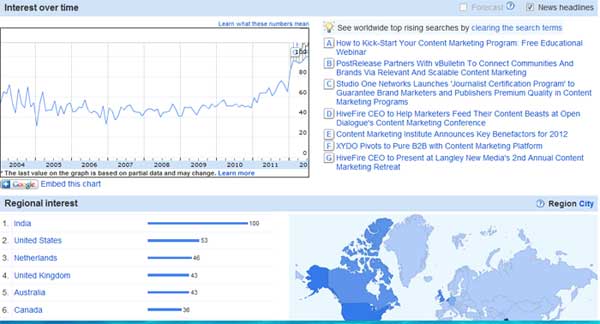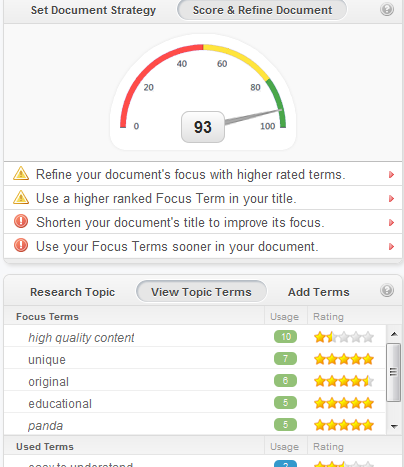 Some time ago, SEO copywriting for the Web was about maximizing for keywords. A whole industry solidified around writing for a certain percentage of a given keyword within the copy and managed the creativity or sell message around that. Then came Google Hummingbird. To be perfectly accurate, then came Google Panda, Penguin, and – finally – Hummingbird.
Some time ago, SEO copywriting for the Web was about maximizing for keywords. A whole industry solidified around writing for a certain percentage of a given keyword within the copy and managed the creativity or sell message around that. Then came Google Hummingbird. To be perfectly accurate, then came Google Panda, Penguin, and – finally – Hummingbird.
The Evolution of SEO Copywriting
The change in SEO copywriting habits has evolved.
- First changes began in 2011 with Google’s introduction of Panda: Filtering content for quality, it penalized for poor quality such as duplicate content and content of little value.
- In 2012 came Google Penguin: Filtering content for spam, it penalized for things like poor quality links and poor keyword strategies.
- In 2013, Google totally rewrote its search algorithm folding elements of both Panda and Penguin into Hummingbird, upending much of the SEO copywriting practices of the past.
To recap from a copywriting perspective, here is where we are today.
Copywriting Rules After Panda and Penguin
Thanks to Google Panda (and continuing with Hummingbird):
- No more duplicate copy; however, Google (and other search engines) can distinguish between same copy shared between global versions of a website. To be really sure, websites can mark one set with a canonical tag for indexing.
- No more writing the same story for multiple sites and expect to rank for it.
- No more slipshod articles written simply to rank for a keyword or keyword string and missing quality or value (such as content farms).
Thanks to Google Penguin (and continuing with Hummingbird):
- No more spam activity, like writing copy by simply repeating a keyword or keyword string.
- No more copy with links using the same keyword or keyword string for anchor text and links that do not lead to valuable content.
How Copywriting Is Different After Hummingbird
Google is now changing the whole search dynamic. How the user is expected to do a search:
- Searching by asking questions
- doing a search using mobile, while in motion
- anticipating what you want before you finish the search string to speed up delivery of information
All will make how you write copy much different. Most important to you as a writer is helping establish nuance to your page.
Building Nuance in Your Copy
Before Hummingbird, you wrote around a keyword. Today, you still need to:
- Begin with a keyword, the key concept behind your page.
- Extend the keyword to keyword strings and work with synonyms for your keyword, letting the search engine know how much more your page is about than simply that one, solitary keyword.
- Provide links that both verify your keyword and that build that extended meaning.
Add Authority to Impress Hummingbird
Hummingbird awards authority, so you need to build on page authority, by providing
- information versus fluff
- depth versus surface
- backup versus bluff
- the long read versus the short read (not necessary long sentences and long paragraphs, but lengthier information, more data or facts)
All of this together tells Google, Yahoo, and Bing, on complex searches, this is the many ways this page fits because this is the many things this page is about and it’s by someone of substance.
This is important for all types of copywriters:
- sell copywriters
- article writers
- brand writers
- white paper writers
It actually is important for anyone writing for the Web.
How to Work with Keywords Today
It is still important to begin with that basic kernel of the keyword or keyword string.
- Google did away with its free keyword reporting tool, but it offers a free keyword planner in its Adwords program that doesn’t require actually planning an ad campaign to use.
- Bing and Yahoo have a free keyword tool, too.
- There are others with limited free use. Google “free keyword tools” for more.
You can still identify the most effective keyword strings as a beginning point for your page and build from there.
For some searchers, a simple keyword string search is still useful and for a while may suffice while users adapt to the new power opening to them through Google Hummingbird. So, don’t eliminate the keyword as a basic strategic tool!
But widen your word palate as you work with copy:
- If you’re writing about Chevrolets, consider that they’re also known as Chevys, Malibus, Impalas, and Cavaliers.
- They aren’t just automobiles, but also cars and vehicles and sedans.
- A dealership isn’t just a sales floor but also a dealer showroom and service center and GM portal.
- Find better ways to redefine your keyword in a meaningful way.
Link to a site’s Interior pages as well as to authoritative pages outside like
- news sites
- reference sites
- universities and research pages
- white papers
- other links with authority
Link to pages that provide
- definition
- nuance
- depth or breadth
Don’t link to pages simply of opportunity that lead the reader to nowhere.
One way to make use of question search strings is to write questions into your copy that search engines can pick up in a search. For instance:
- Anticipate a search string as one of your first questions in an FAQ page and answer it, including a link to an appropriate page on the website.
- Write a headline or subhead leading with “How” or “What” or “When” that builds into the keyword.
How to Copy Write for Hummingbird
Many of the old rules-of-thumb for SEO copywriting still apply.
- Use keywords or keyword strings early on the page and in headlines and subheads.
- Use keywords or keyword strings in meta tags.
- Create unique page titles and meta descriptions for every page (no duplicates!).
- Use keywords in anchor text for links in first use, vary verbiage in anchor text afterwards.
- No more keyword stuffing! Write sensibly for your audience.
SEO copywriting has evolved, especially more recently. But its goal has always been the same: Reach the audience with dynamite copy. Today more than ever, that is done by writing quality content, in partnership with Google Hummingbird.

